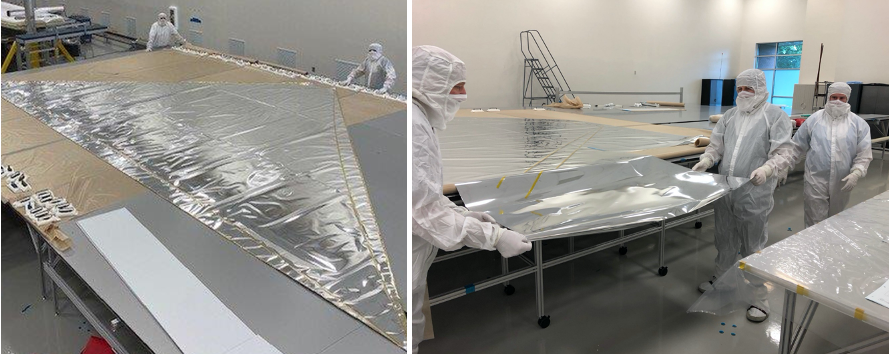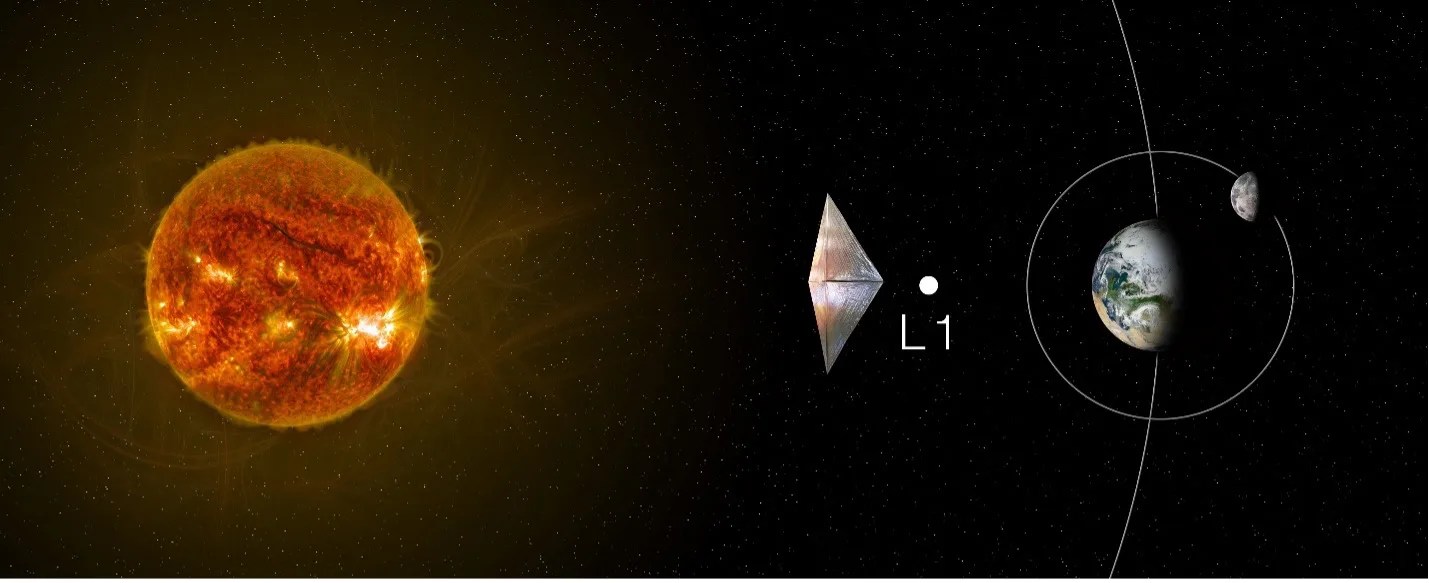6 min read
NASA’s Science Mission Directorate Program Management Council met on June 28, 2022, to evaluate whether the Solar Cruiser project was ready to proceed to the building phase – known as Phase C -- of its life cycle. It was determined that the project had not demonstrated an ability to meet its launch readiness date and stay within the established cost requirements. As a result, the project was not confirmed, and will not move forward.
PROJECT
Solar Cruiser technology demonstration mission
SNAPSHOT
To enable missions to reach novel and otherwise difficult or impossible destinations for observing the Sun, NASA is developing the 1653 m2 Solar Cruiser solar sail system for flight demonstration in 2025.

Leveraging technology developments to enable new and groundbreaking science is an important Science Mission Directorate goal. Solar Cruiser, a pathfinder mission sponsored by the Heliophysics Division‘s Solar Terrestrial Probes Program, incorporates several new technologies originally developed by various organizations and integrates them to demonstrate a remarkable capability—the use of sunlight to propel a spacecraft.
The solar sail technologies demonstrated on Solar Cruiser will enable future missions to address important science questions about the Sun, its interaction with Earth, and other elements of the heliosphere. Solar Cruiser will demonstrate how solar sail propulsion can enable spacecraft to collect observations from novel vantage points that are difficult to reach and sustain. Specifically, Solar Cruiser will maintain a position sunward of Lagrange point L1—the position where Earth’s and the Sun’s gravity are balanced along the Sun-Earth-line. Solar Cruiser will also demonstrate technologies that will enable future missions to improve space-weather monitoring, prediction, and science.
Solar sails use large, highly reflective, lightweight material that reflects sunlight to propel a spacecraft. The continuous photon pressure from the Sun’s rays provides thrust with no need for the heavy, expendable propellants employed by conventional chemical and electric propulsion systems that limit mission lifetime and observation locations. Solar Cruiser will demonstrate the ability of solar sails to enable missions to observe the solar environment from unique vantage points of interest to heliophysics, including maintaining a satellite in a position sunward of L1. Monitoring the Sun at this orbital location is of interest not only to NASA scientists, but also to NASA’s human exploration programs, which must support human spaceflight crew safety and health; the National Oceanic and Atmospheric Administration (NOAA), which is the nation’s source for space weather alerts and forecasts; and the Department of Defense, which monitors space weather for interference with communications or satellites. Solar Cruiser will also demonstrate the capability to obtain sustained in-situ Earth magnetotail measurements and the ability to achieve and maintain a high-inclination solar orbit—a capability which future missions to image the polar regions of the Sun will require.

A team led by NASA’s Marshall Space Flight Center is developing the Solar Cruiser mission to mature solar sail technology for future mission use in the 5–15-year timeframe. The Solar Cruiser team (which includes Ball Aerospace, Roccor, LLC, and subcontractor, NeXolve) is leveraging solar sail technology advancements from the last decade, including test flights of smaller sails such as those on NASA’s NanoSail-D mission, led by NASA Marshall; the Japan Aerospace Exploration Agency’s Interplanetary Kite-craft Accelerated by Radiation Of the Sun (IKAROS) mission; The Planetary Society’s LightSail missions; as well as Marshall’s planned 2021 flight of the Near-Earth Asteroid (NEA) Scout, developed by the NASA Human Exploration and Operations Mission Directorate Advanced Exploration Systems Division.
Solar Cruiser will fly a large, four-quadrant solar sail on a ten-month mission that demonstrates numerous technologies necessary to implement exciting, future missions to destinations heretofore unreachable. Solar Cruiser includes the largest sail ever flown—a 1653 m2, 2.5-micron thick reflective sail that is thinner than a human hair. Solar Cruiser also includes four 29.5-m, lightweight, composite booms to deploy the sail; embedded thin film photovoltaics to demonstrate a new method of power generation; and embedded Reflective Control Devices (RCDs) that will help keep the sail stable.
The sail membrane is manufactured using a thin-film polyimide (clear polymer 1, or CP1) coated with aluminum to make it reflective. The CP-1 sail membrane was developed by NASA and licensed by NeXolve over two decades ago and was successfully flown on NanoSail-D. CP1 was chosen for Solar Cruiser because of its lengthy flight heritage, demonstrated properties that are suitable for the Solar Cruiser and future missions, and availability. It is also scalable to sails of virtually any size, from the 10 m2 flown on NanoSail-D, to sails greater than 10,000 m2.
On previous missions, including NanoSail-D and the LightSails, solar sails were deployed and tensioned using metallic Triangular, Rollable and Compressible (TRAC™) booms—a design originated by the U.S. Air Force and licensed by Roccor, LLC. The upcoming NEA Scout mission will also use these metallic booms. These extremely long booms have a triangular cross-section that can be forced flat, enabling them to be rolled onto a spool for stowage. Metallic TRAC™ booms, however, are not extensible to Solar Cruiser-class sails due to their mass and thermal expansion properties. Instead, Roccor, LLC developed booms made from composite materials via NASA’s Small Business Innovation Research (SBIR) program.

Solar Cruiser will use an Active Mass Translation (AMT) device originally developed by NASA Marshall for the NEA Scout mission to actively adjust the spacecraft center of (light) pressure relative to its center of mass to keep the sail stable and to support steering and navigation. In addition, RCDs, composed of a thin film that can be switched from reflective to transmissive with an applied voltage, will contribute to maintaining the sail’s stability during flight. The concept for these RCDs was originally developed via a Space Technology Mission Directorate (STMD) Early Career Faculty grant; SMD subsequently sponsored NeXolve to advance the technology for use on Solar Cruiser.
Solar Cruiser will also demonstrate the use of thin-film photovoltaic cells embedded in the sail to generate electrical power. First developed at NASA Marshall by STMD, this technology was further refined via an STMD Early Career Initiative as part of the Lightweight Integrated Solar Array and anTenna (LISA-T) project and will be demonstrated on Solar Cruiser to provide power for future missions.
Solar Cruiser is scheduled for launch in 2025. Once it successfully demonstrates these technologies, solar sail propulsion using large, high-performance sails will be available for future science missions, providing a new capability for NASA and the nation.
PROJECT LEAD
Les Johnson, NASA Marshall Space Flight Center
SPONSORING ORGANIZATION
Heliophysics Division‘s Solar Terrestrial Probes Program







